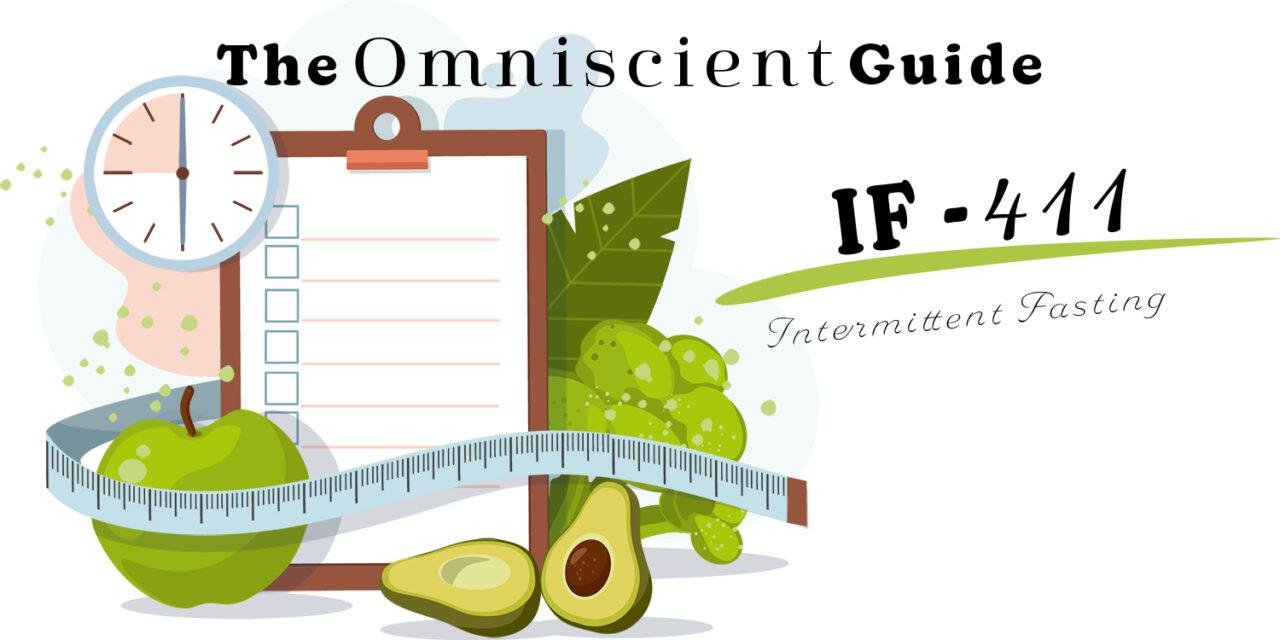- IF 411, The Omniscient Guide
- IF-411, THE BENEFITS
- The 4 Most Popular Types of Intermittent Fasting
IF-411 An Introduction to Intermittent Fasting
You simply need to do a search online about different diets, and the internet will inundate you with a myriad of diets available today for weight loss. If you search a little more, you may come across a relatively older option for eating. That option is intermittent fasting. It simply means restricting your calories for a period each day or week. This post is an introduction to our series on intermittent fasting. In upcoming posts in the IF 411 series, we will explore and share all you need to know about intermittent fasting.
We want to start by sharing a little about the history of IF. In this introduction, we want to share the origins and the religious aspect of this form of eating. We hope you will find this series helpful if restrictive eating is a consideration on your path to living with vitality.
IF 411 – The History
Intermittent fasting is not a modern concept. Practiced for centuries by many cultures, it wasn’t until 1915 that they promulgated it as a potential treatment for obesity. Move forward to 1960, and a renewed interest prompted caution, because it was not medically researched. Restrictive eating as a dietary regimen first appears in the 1940s. Researchers discovered that calorie restriction or intermittent fasting extends the lifespan of animals such as mice.
In 2012, intermittent fasting took prominence again when Michelle Harvie and Mark Mattson, a professor of neuroscience at John Hopkins, introduced and popularize the 5:2 method of intermittent fasting in the United Kingdom and Australia (you will learn more about the different methods in an upcoming post).
IF 411 – The religious connection
Ancient religions, like Hinduism, Buddhism, Jainism, and Judaism, practice some form of restrictive eating. These religions have a common practice of fasting despite their varying beliefs. Interestingly, they follow different ways and methods of fasting. These variations and other differences exist because of various geographical and demographic aspects. For instance, Hinduism, which is practiced primarily in India, Nepal and Mauritius, has specific days of fasting. These days are called Navratri (9 days of fasting), Shivratri (1-2 days of fasting).
Similarly, Jainism, another religious sect in India, celebrates Paryushana, a period where followers of this religion increase their connection to their faith by fasting and praying for long periods.
Another religion to consider is Christianity. Within Christianity, different sects fast differently and at different times. For example, Catholics do not eat meat on Fridays during Lent.
Coptic Christians, which is the primary form of Christianity in Egypt, fast for different durations for 210 days throughout the year. They have eight principal fasts, each lasting for a different duration. They also have different restrictive diets.
People following the Islamic religion fast throughout the entire month of Ramzan, or Ramadan in the arabic culture.
The Different Rationales of Fasting
The reasons and beliefs behind the practices of restrictive fasting differ. I like to look at the common denominator of most religions, and fasting is definitively a common denominator.
It’s clear the benefits of fasting have existed for centuries and practiced by different sects. Regardless of why they fast, there certainly is a rationale behind something that’s practiced for centuries, globally.
In the past, fasting wasn’t just a religious concept. During times of strifes, wars, epidemics, or plagues, some cultures used fasting as penitence. For example, in the canton of Geneva (Switzerland), Jeune genevois or fast of Geneva is a public holiday. Its origins dates back to 1567 to signal support of protestants being persecuted in Lyon France. Today, it’s a day of fasting on the Thursday following the first Sunday in September.
IF 411 Starts Here
Intermittent fasting is currently a trend that’s actually not a trend. It’s an ancient practice with a new name. Thanks to science, we now have a better understanding of the benefits of restrictive eating or intermittent fasting. It is a powerful tool that offers optimal health and vitality that will affect your life in positive ways.
Summary
This post is your introduction to a series of posts titled IF-411. This will be an extensive guide on intermittent fasting. In upcoming posts, we will share more on the different methods of intermittent fasting and tips for fasting effectively. In fact, in the next post, we will delve into the benefits of adopting this lifestyle.
Related: The Best Diets For Health & Vitality









[…] IF 411, The Omniscient Guide […]